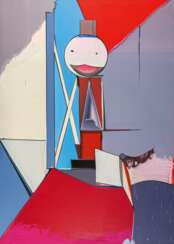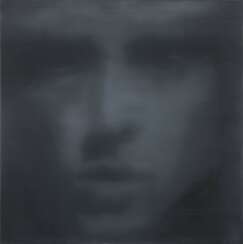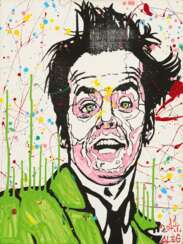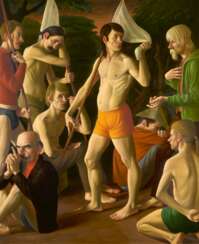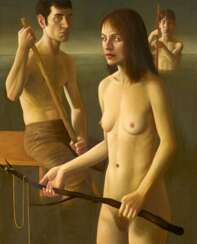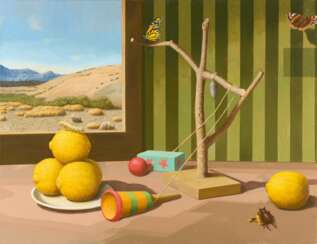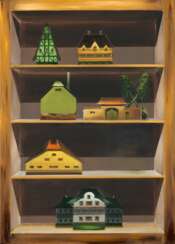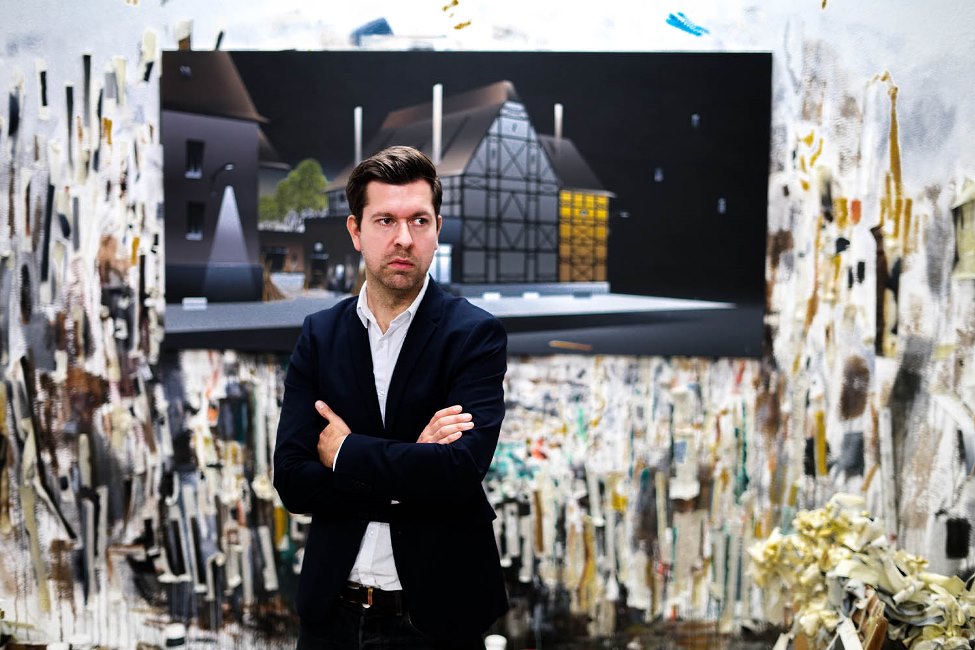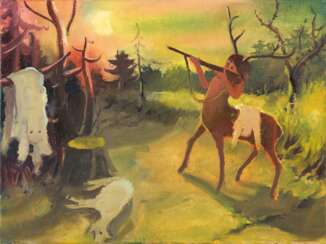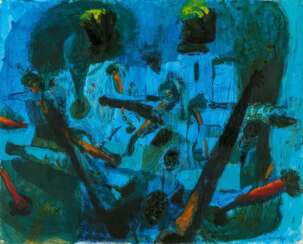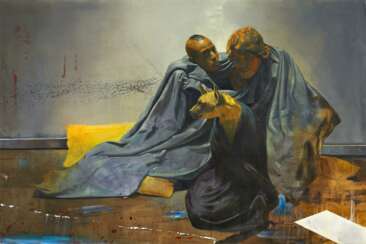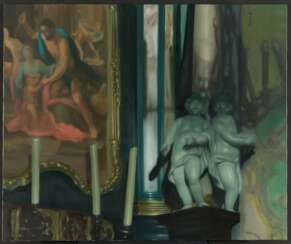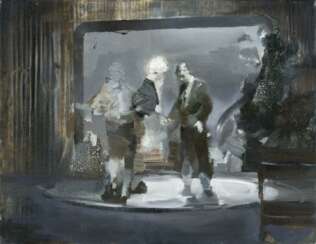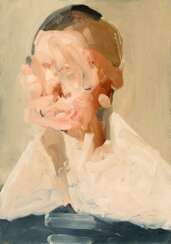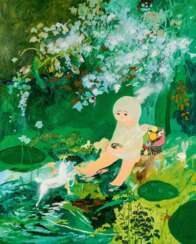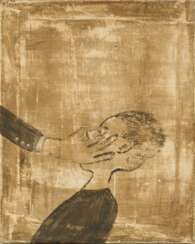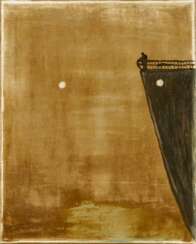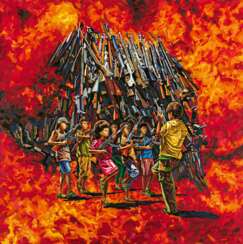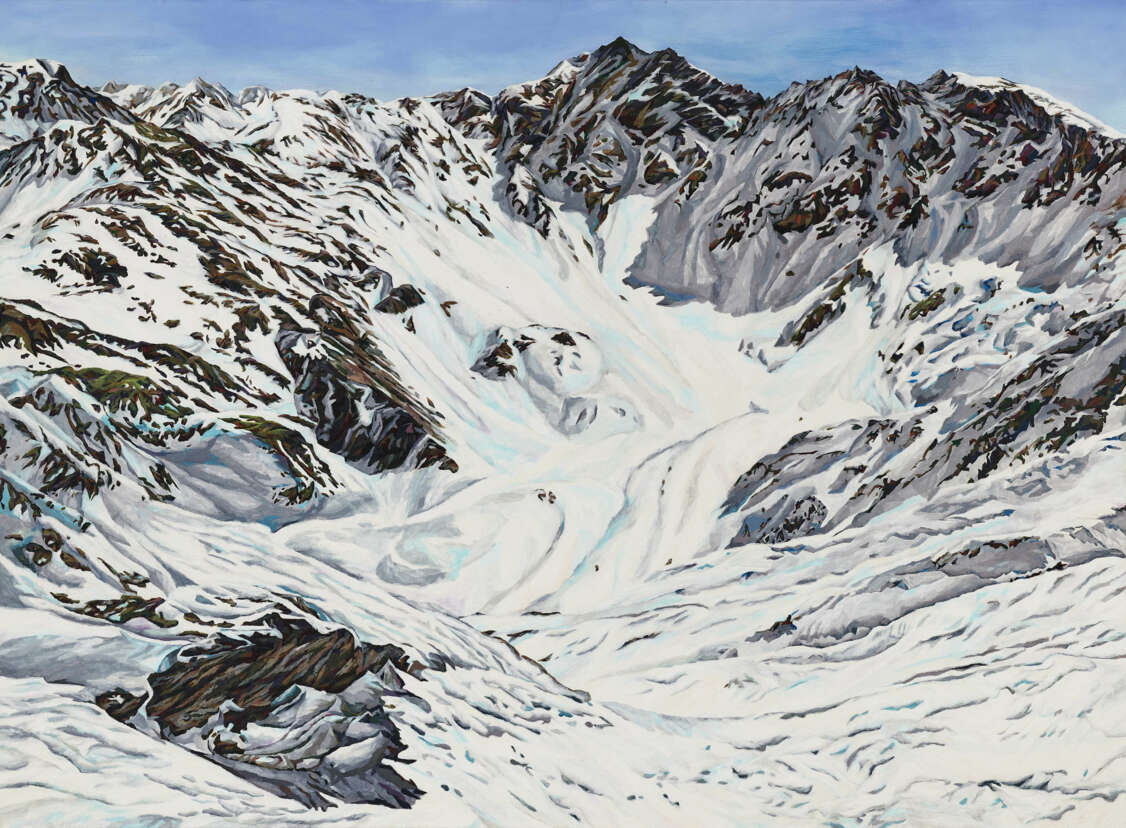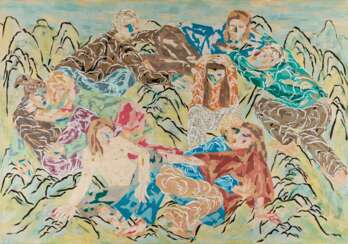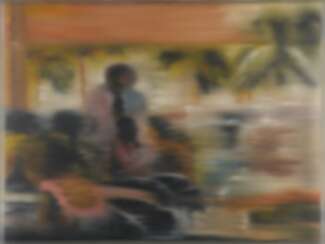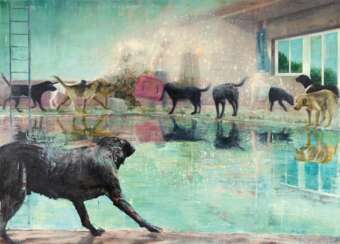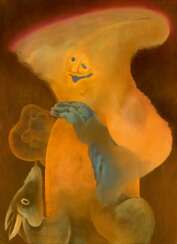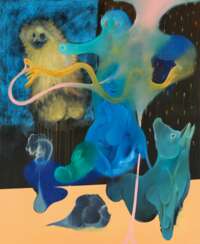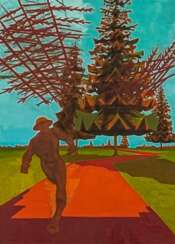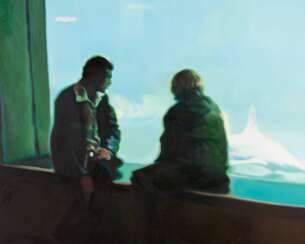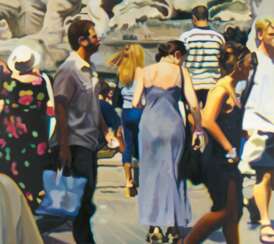
Modern and Contemporary art — A491: Modern, Post War & Contemporary
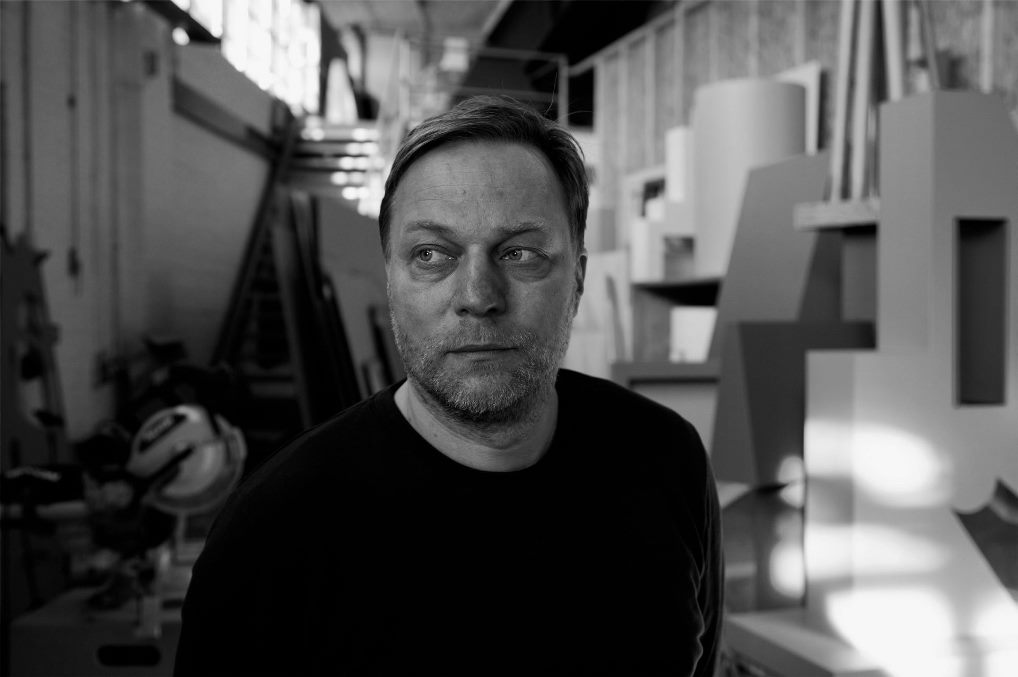
Thomas Scheibitz was a German painter and sculptor.
He is among the most important German artists and sculptors of his generation. Since the early 1990s Scheibitz has developed conceptual painting and sculpture that draws on historical references, and at the core of the Berlin artist's work is the search for a new relationship between figuration and abstraction.
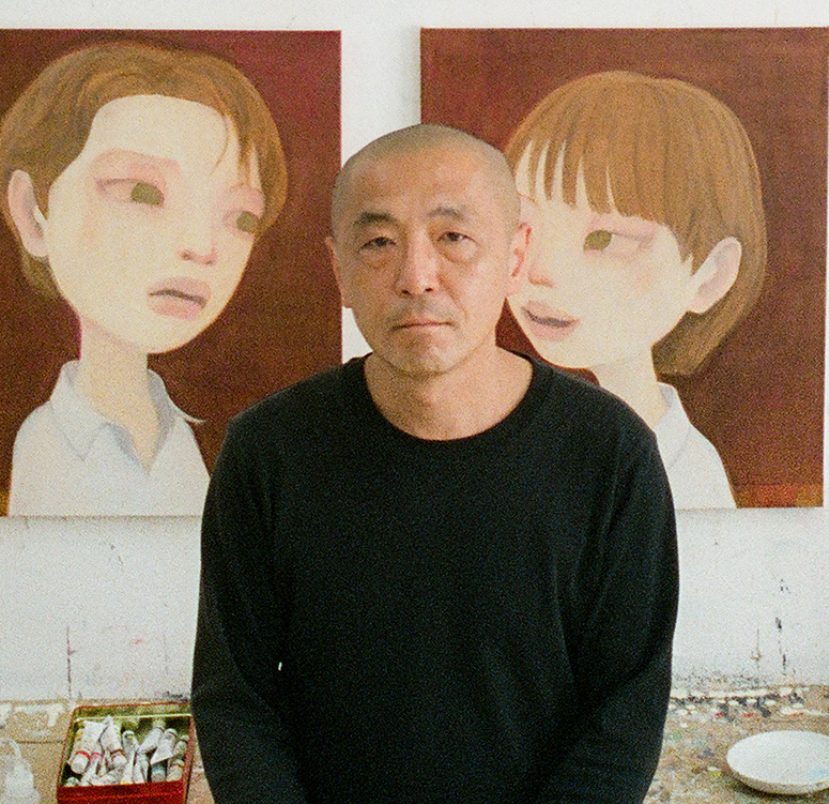
Hideaki Kawashima is a Japanese artist who lives and works in Tokyo.
After graduating from the University of Tokyo, he underwent two years of Buddhist temple training before beginning his career as an artist in 2001.
Hideaki Kawashima uses portrait painting and self-portrait masks to show the ambiguity of human life. His characters with expressive eyes express a spectrum of emotions: fear, desire, anxiety, longing. Yet these emotions are ambiguous. Kawashima brings touches of folklore, mythology and surrealism to androgynous faces.
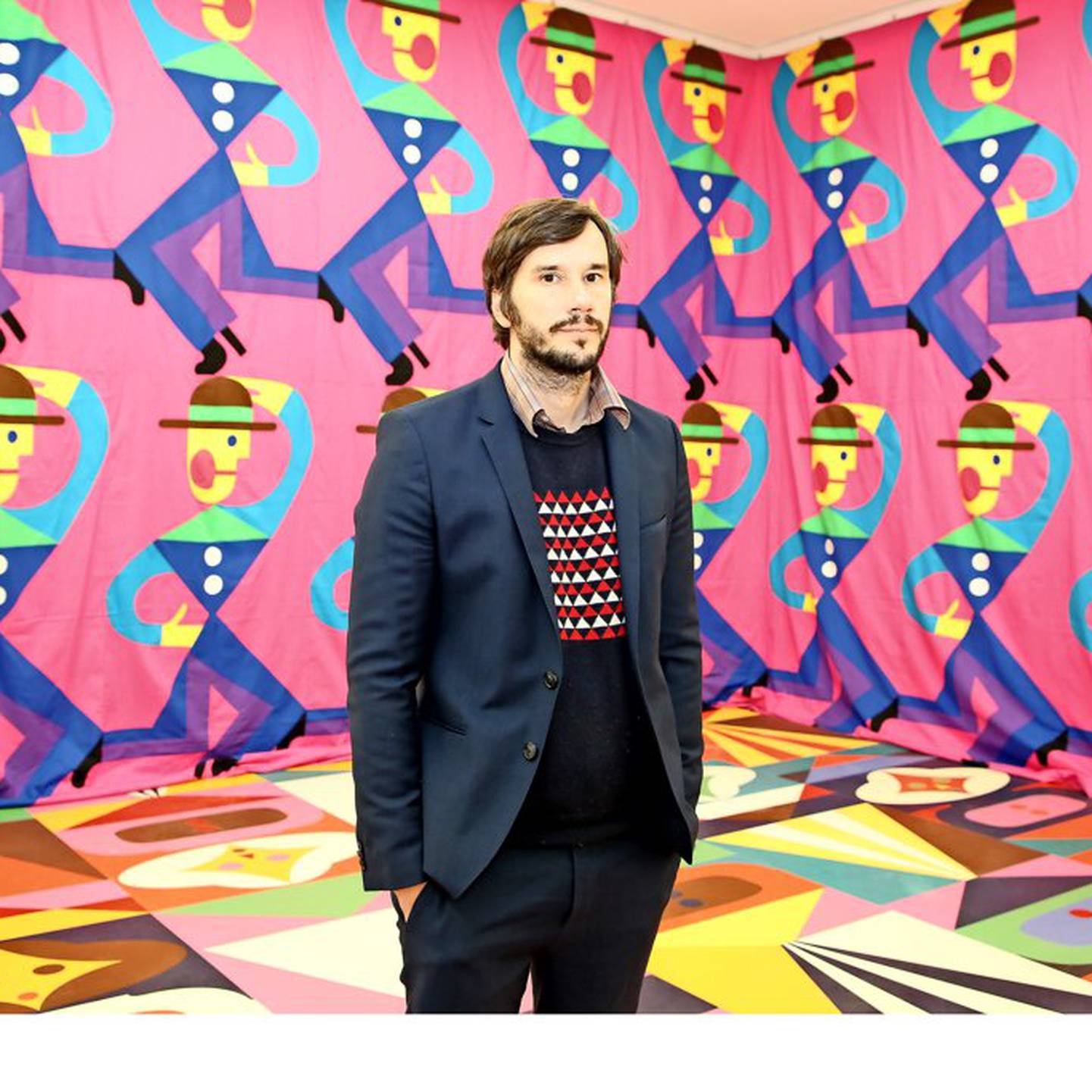
Christoph Ruckhäberle is an artist based in Leipzig. Ruckhäberle studied at the California Institute of the Arts from 1991 to 1992, and received his BFA in painting in 1995 and his MFA in 2002 from Hochschule für Grafik und Buchkunst in Leipzig. He is associated with the New Leipzig School.
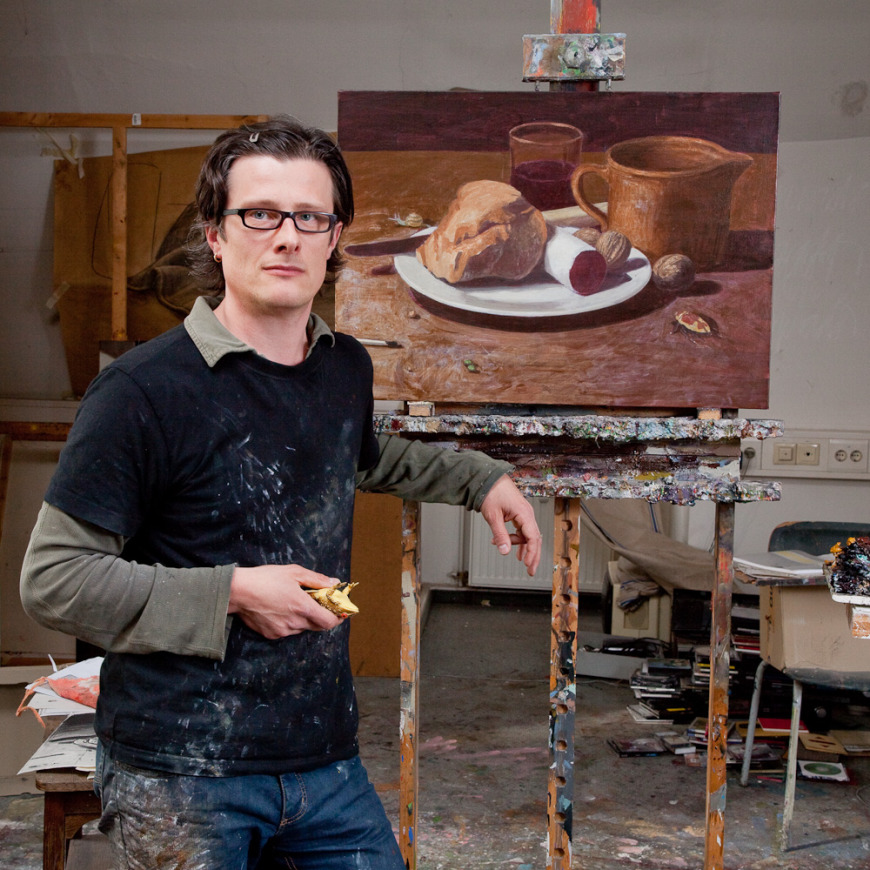
Jan Dörre is a German painter known for his still lifes in the modern vanitas style.
He studied painting at the Academy of Visual Arts in Leipzig, lives and works in Leipzig.
Jan Dörre paints still lifes, which are directly associated with the paintings of the old masters of the 17th century. The artist in his works repeats in different variations the familiar set of motifs found in baroque still lifes of vanitas: bread, cutlery, fruit, insects, birds, snakes, lizards, books, letters, skull, etc. But next to them in a modern setting he places objects of our time, for example, pills and empty packages from them. All this together conveys the general idea of the genre: a reminder of the transience of life, the futility of pleasure and the inevitability of death.
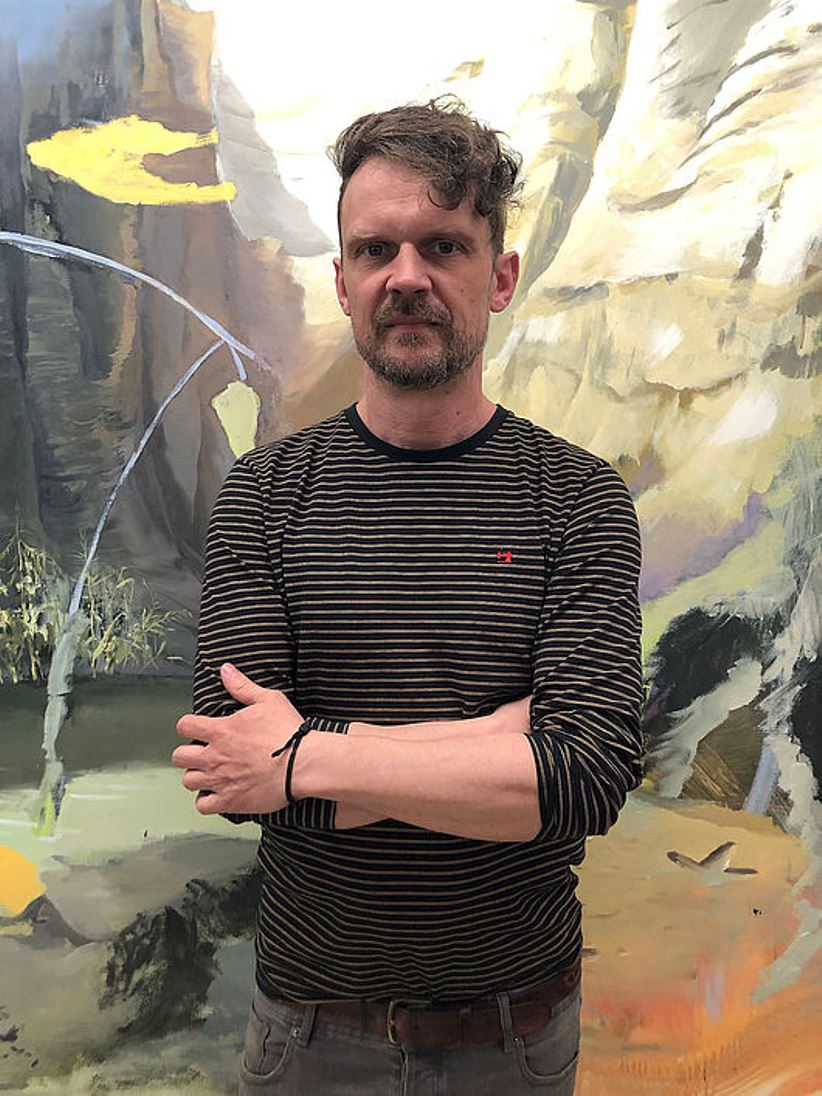
Tilo Baumgärtel is a German artist who lives and works in Leipzig.
His paintings go back to the works of social realism and large-format propaganda posters. The artist works with a variety of mediums and techniques. In addition to painting, he also uses lithography, drawings on paper, and video. Pictorial space and the creation of sometimes surrealistic landscapes is one of his central themes.
Tilo Baumgärtel also collaborates with theaters, developing sets and videos on scenography.
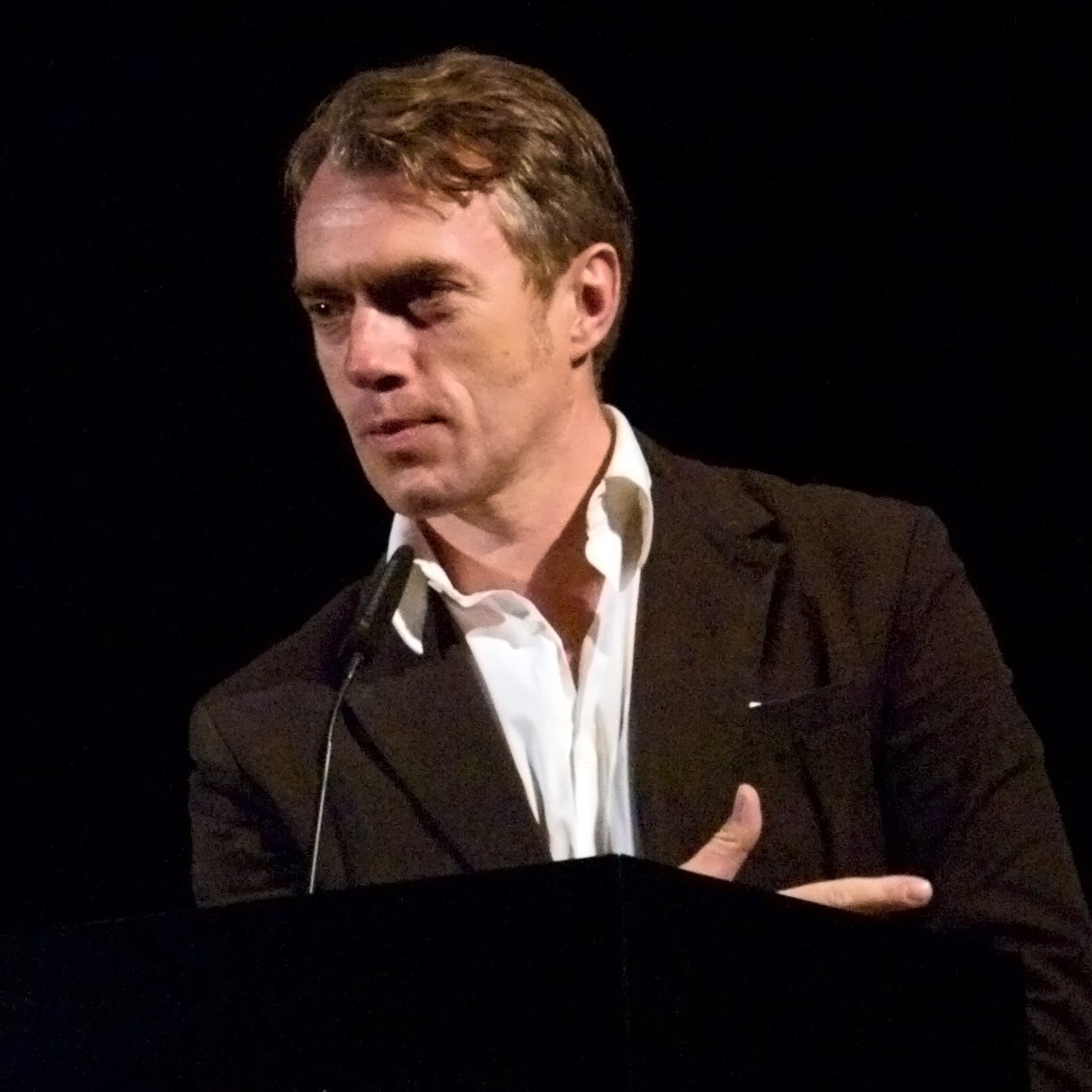
Neo Rauch is a German artist whose paintings mine the intersection of his personal history with the politics of industrial alienation. His work reflects the influence of socialist realism, and owes a debt to Surrealists Giorgio de Chirico and René Magritte, although Rauch hesitates to align himself with surrealism. He studied at the Hochschule für Grafik und Buchkunst Leipzig, and he lives in Markkleeberg near Leipzig, Germany and works as the principal artist of the New Leipzig School. The artist is represented by Galerie EIGEN + ART Leipzig/Berlin and David Zwirner, New York.
Rauch's paintings suggest a narrative intent but, as art historian Charlotte Mullins explains, closer scrutiny immediately presents the viewer with enigmas: "Architectural elements peter out; men in uniform from throughout history intimidate men and women from other centuries; great struggles occur but their reason is never apparent; styles change at a whim."
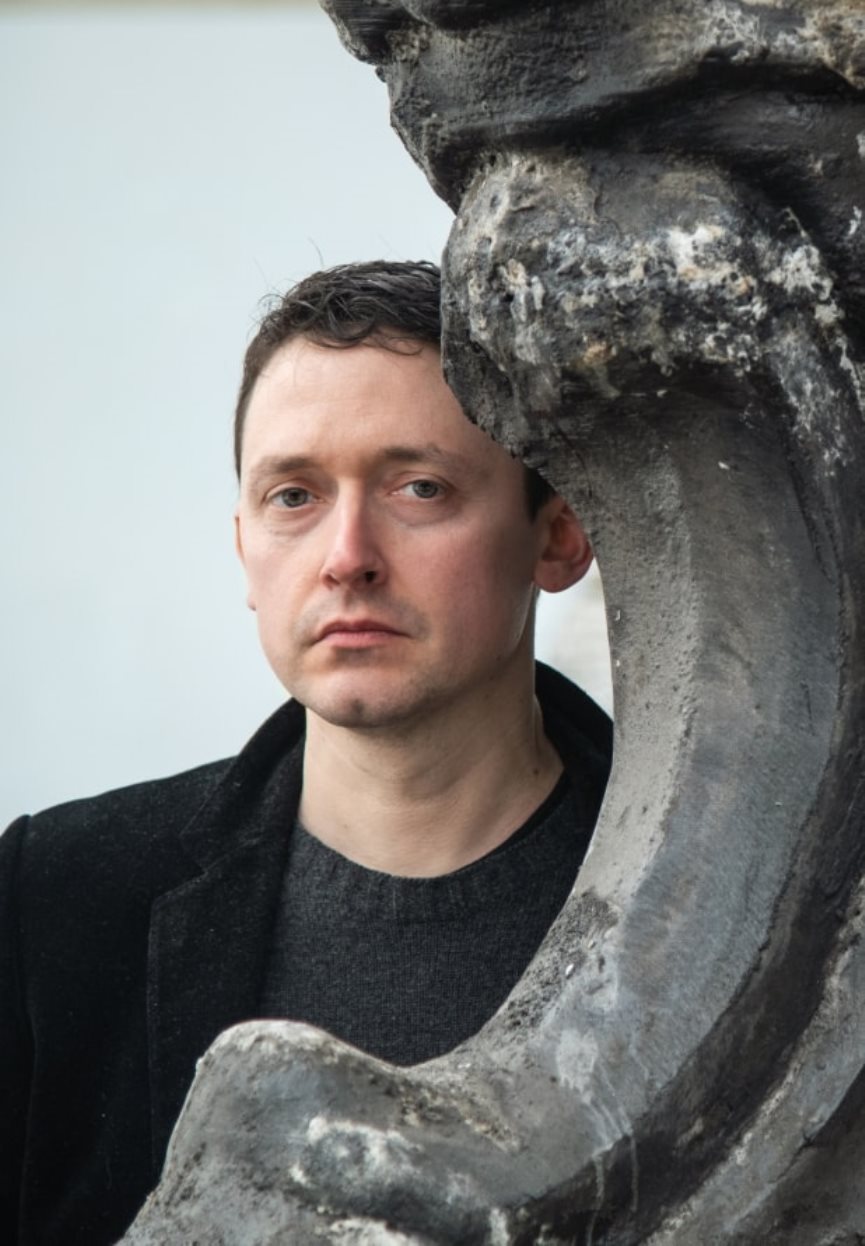
Nicola Samori is an Italian painter-painter and sculptor known for his brutal manipulation of works of art.
He graduated from the Academy of Fine Arts in Bologna and lives and works in Bagnacavallo.
Samori's work is inspired by the works of great masters, more often in the Baroque style of the 16th and 17th centuries: he creates copies of them and then rips, scratches, pierces them, thereby transforming them, filling them with the restless spirit of our time. In roughly the same way, the artist also creates sculptural works, giving birth to new, modern images rooted in the history of art.

Nicola Samori is an Italian painter-painter and sculptor known for his brutal manipulation of works of art.
He graduated from the Academy of Fine Arts in Bologna and lives and works in Bagnacavallo.
Samori's work is inspired by the works of great masters, more often in the Baroque style of the 16th and 17th centuries: he creates copies of them and then rips, scratches, pierces them, thereby transforming them, filling them with the restless spirit of our time. In roughly the same way, the artist also creates sculptural works, giving birth to new, modern images rooted in the history of art.
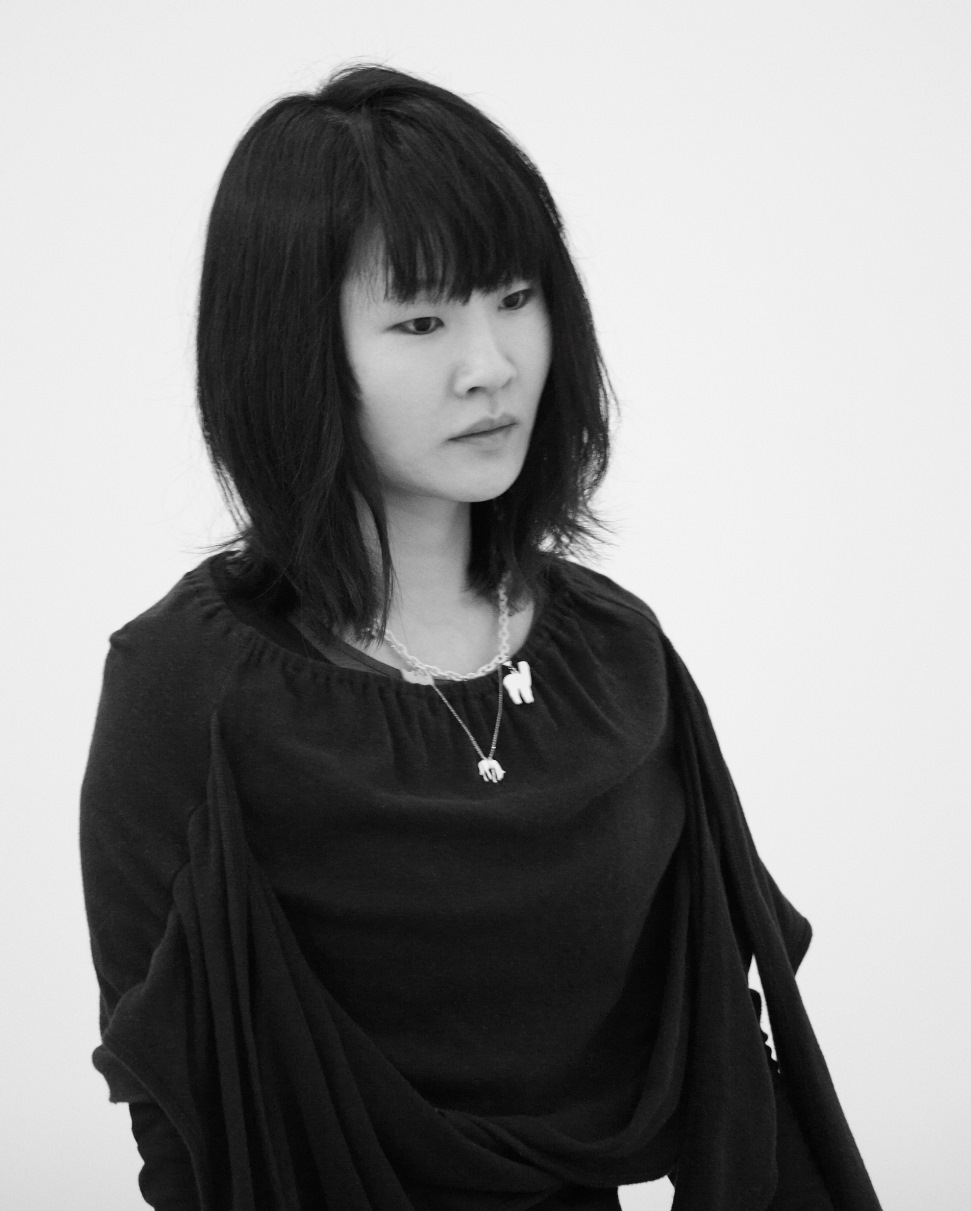
Tomoko Nagai is a Japanese artist who lives and works in Japan.
She graduated from the University of Fine Arts and Music of Aichi Prefecture with a degree in oil painting.
Tomoko Nagai is known for her whimsical, puppet fantasy creatures painted in mixed media. She depicts animals, children, colorful trees and mushrooms as in a theatrical setting. Nagai's most famous work is located in a kindergarten in one of Japan's earthquake-stricken areas, in Shichigahama, Miyagi, where she painted the walls of a swimming pool.
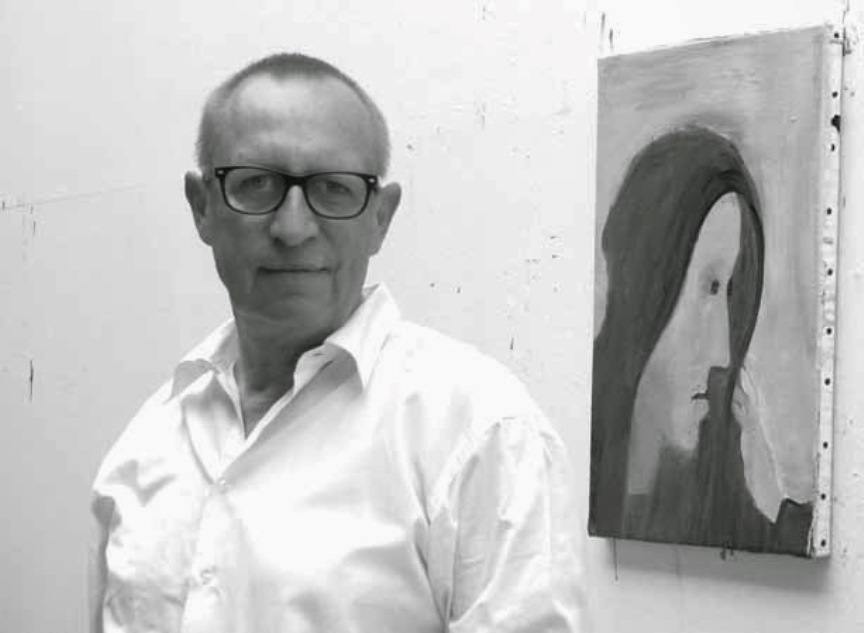
Norbert Schwontkowski is a German painter. He studied freehand painting at the University of Design in Bremen and at the University of Fine Arts in Hamburg.
Norbert Schwontkowski's work lies between abstraction, realistic representation and caricature. He mixes the unconscious and surreal with the real, the figures and subjects in the artist's paintings resemble complex dreams.
Schwontkowski created his paints from hand-crushed pigments mixed with various materials to produce a multitude of textures.

Norbert Schwontkowski is a German painter. He studied freehand painting at the University of Design in Bremen and at the University of Fine Arts in Hamburg.
Norbert Schwontkowski's work lies between abstraction, realistic representation and caricature. He mixes the unconscious and surreal with the real, the figures and subjects in the artist's paintings resemble complex dreams.
Schwontkowski created his paints from hand-crushed pigments mixed with various materials to produce a multitude of textures.
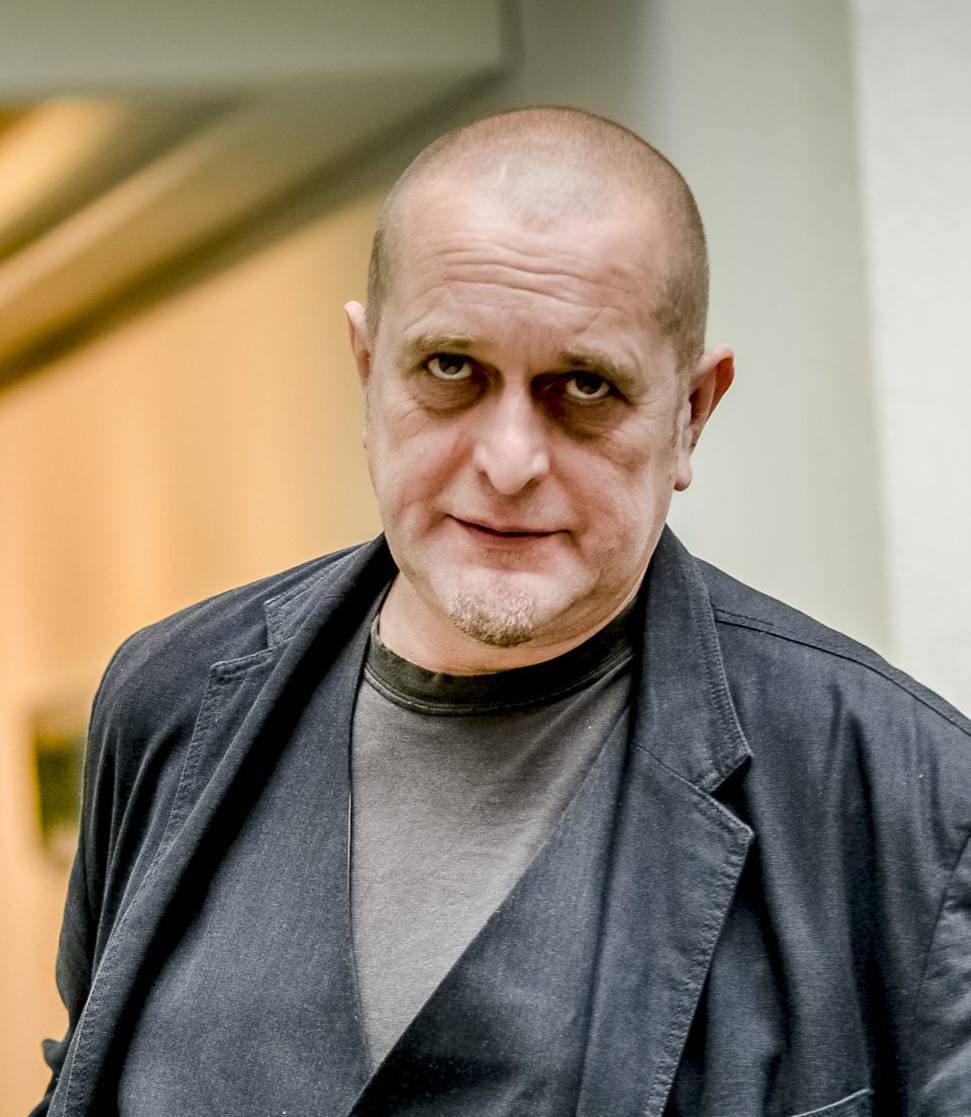
Stephan Kaluza is a multifaceted artist known for his work as a photographer, painter, and author. Living and working in Düsseldorf, Kaluza has developed a unique artistic voice that explores the intersections of natural philosophy, history, and the essence of human perception through both his visual art and literary works. His education in Düsseldorf during the 1990s, encompassing studies in photography, art history, and philosophy, has deeply influenced his creative output, allowing him to craft works that resonate on multiple levels with viewers and readers alike.
Stephan Kaluza's art often delves into themes of nature and creation, with his paintings ranging from hyperrealistic depictions to nearly abstract portrayals of forests and water surfaces. Notably, his work introduces disturbances into seemingly idyllic landscapes, revealing the layers of history and human impact hidden beneath the surface beauty of nature. This duality invites viewers to question the reality of what they see and to consider the deeper narratives that landscapes can hold, especially when those landscapes have served as backdrops to historical events or personal stories.
One of his most ambitious projects, the "Das Rheinprojekt," saw Stephan Kaluza undertaking an almost eight-month journey along the Rhine River. Documenting the river's right bank in over 21,000 photographs, he created a panoramic view that challenges traditional perspectives of landscape photography. This work, along with his "Das Mauerprojekt" and other photographic series, underscores Kaluza's commitment to capturing and conveying the complex relationship between humanity and the natural world.
Stephan Kaluza's contributions to the fields of art and literature have been recognized with awards such as the George-Konell-Preis of Wiesbaden and the Price of the Carl- und Ruth Lauterbach-Stiftung Dusseldorf. His works are held in both public and private collections worldwide, including the Portland Art Museum in Oregon, USA, and the Stadtmuseum Düsseldorf, Germany, highlighting his international appeal and the broad relevance of his themes.
For collectors and experts in art and antiques, Stephan Kaluza offers a profound engagement with the world through the lens of an artist deeply informed by a rich educational background and a keen sensitivity to the natural and cultural landscapes that shape our experiences. His work invites contemplation and dialogue, making his pieces valuable additions to any collection.
Stay updated on Stephan Kaluza's latest works, exhibitions, and publications by subscribing to newsletters from galleries and museums that feature his work. This subscription ensures access to new sales, auction events, and showcases related to Kaluza's evolving portfolio, offering insights into contemporary art and literature influenced by his unique perspective.
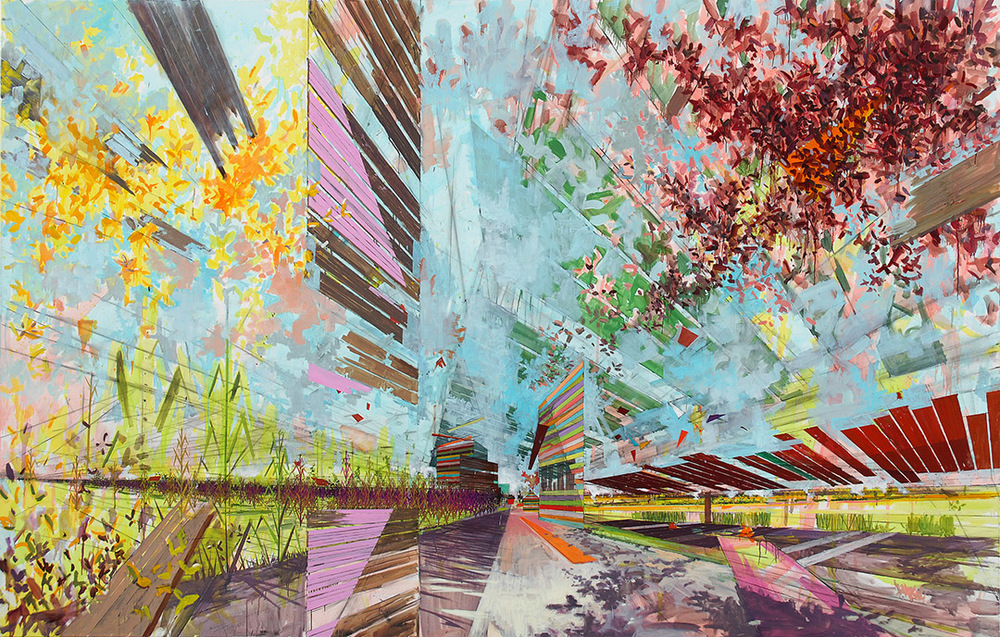
David Schnell is a celebrated figure in contemporary art, well-known for his dynamic and immersive landscapes that blur the lines between natural and constructed environments. Educated at the Hochschule für Grafik und Buchkunst in Leipzig, Schnell's artistry flourished under the tutelage of Arno Rink, aligning him with the influential New Leipzig School. This affiliation situates him among the vanguards of a movement that revitalizes painting with fresh perspectives and conceptual depth.
David Schnell's works are characterized by their deep perspective and a unique blend of culture and nature, often incorporating elements that evoke a sense of fluidity and transformation within his landscapes. This approach not only invites viewers to become part of the artwork but also challenges them to contemplate the dualities of construction and destruction within the landscapes presented. His exhibitions, such as "Hover" in collaboration with the Mönchehaus Museum für Moderne Kunst and Museo de Arte de Ponce, showcase his ability to transform landscapes into grand art,.
Recent works and exhibitions, including his pieces "Ton" (2018) and "Kalender" (2017/2021), further exemplify David Schnell's mastery in painting, demonstrating his continuous exploration of space, time, and perception through large-scale oil on canvas. His artworks, such as "Schleuse" (2022), "Quartier" (2017), and "Abschied" (2023), fetch significant appreciation in the art market, reflecting both his critical acclaim and commercial success.
For collectors and experts in art and antiques, David Schnell represents a compelling convergence of traditional painting techniques and contemporary thematic exploration. His work not only honors the legacy of landscape painting but also propels it into the contemporary discourse with innovation and introspection.
Stay updated on David Schnell's latest exhibitions, artworks, and sales by subscribing to updates from galleries and art platforms that feature his work. This subscription ensures that enthusiasts are always informed about the latest developments and opportunities related to Schnell's evolving body of work.
